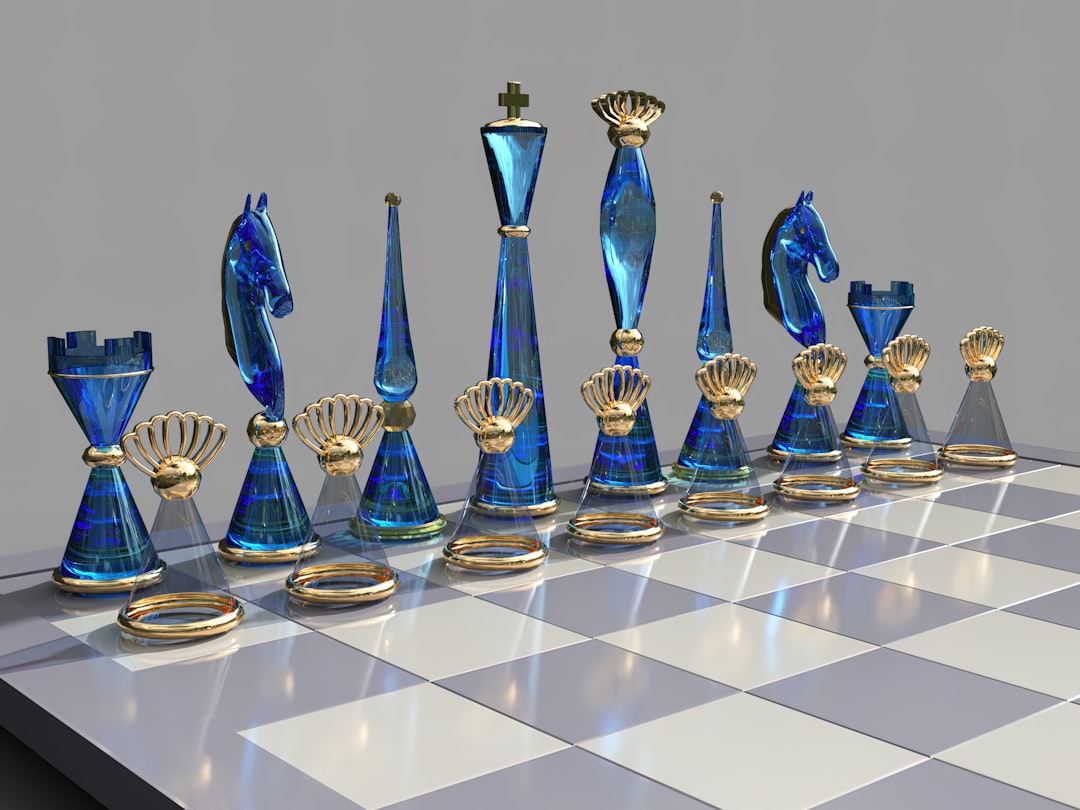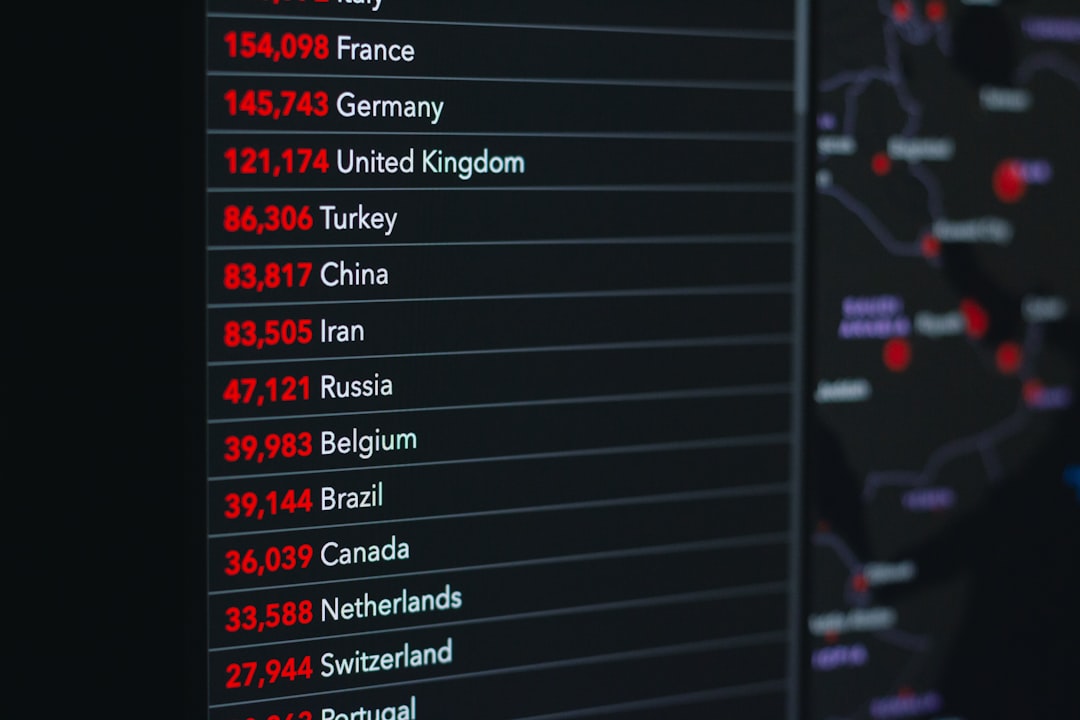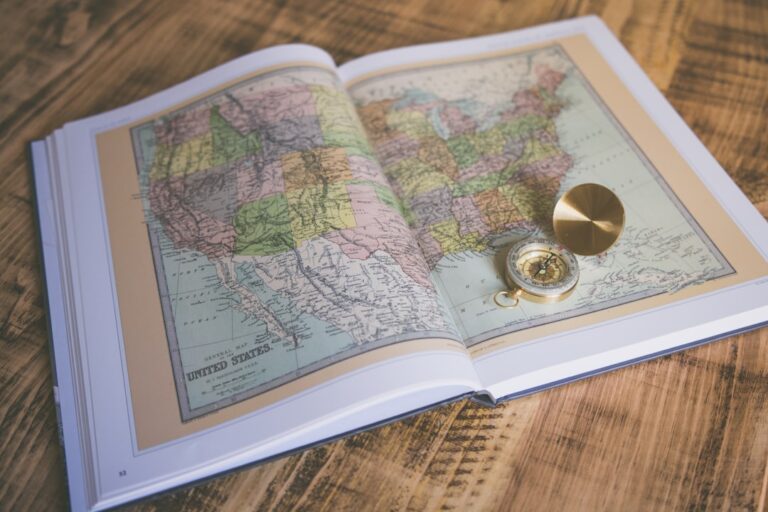Support our educational content for free when you purchase through links on our site. Learn more
Who Is Number One in the Global Top 1000 Brands? (2025) 👑
Ever wondered which brand truly rules the world? Spoiler alert: it’s not just about who makes the most money, but who owns the hearts, minds, and wallets of billions across the globe. In this deep dive, we unravel the secrets behind the world’s most valuable brands and reveal the reigning champion of the global top 1000 brands. From tech titans like Apple and Microsoft to luxury legends like Louis Vuitton and Hermès, we break down what makes these brands unstoppable forces in 2025.
But here’s the kicker: the race for brand supremacy is far from over. We’ll also spotlight the rising stars and unexpected challengers shaking up the leaderboard, plus the game-changing trends—think AI, sustainability, and customer experience—that could crown the next global icon. Ready to discover who’s on top and why? Let’s get into it!
Key Takeaways
- Apple remains the undisputed number one brand globally, thanks to its seamless ecosystem, innovation, and emotional connection with consumers.
- Tech companies dominate the top 25, with Microsoft, Amazon, Google, and Tesla leading the charge in cloud computing, AI, and electric vehicles.
- Luxury brands like Louis Vuitton and Hermès show remarkable resilience, leveraging exclusivity and heritage to maintain high brand value.
- Sustainability, customer experience, and innovation are the key drivers shaping brand rankings in 2025 and beyond.
- Rising stars like Nvidia and fintech brands are disrupting traditional categories, signaling exciting shifts in the global brand landscape.
Explore and shop top brands featured in this article:
Apple | Microsoft | Amazon | Nike Athletic Clothing | Louis Vuitton | Tesla | Hermès
Table of Contents
- ⚡️ Quick Tips and Facts
- Unpacking Brand Power: Understanding Global Brand Valuation Methodologies
- The Reigning Champion: Unveiling the World’s Most Valuable Brand 👑
- The Elite Contenders: Brands Vying for the Top Spot
- Beyond the Top 25: Key Trends Shaping Global Brand Value
- The Rise of Tech Titans: Digital Dominance and Innovation 🚀
- Sustainability and Purpose: Brands with a Conscience 🌱
- Customer Experience: The New Battleground for Brand Loyalty ❤️
- Luxury’s Enduring Allure: Crafting Exclusivity and Desire ✨
- Automotive Evolution: From Combustion to Electric Dreams 🔋
- Financial Services: Trust, Technology, and Transformation 💰
- Fast-Moving Consumer Goods (FMCG): Everyday Essentials, Enduring Brands 🛒
- Media & Entertainment: Capturing Hearts and Minds Globally 🍿
- The Underdogs and Rising Stars: Who’s Next to Disrupt the Global Brand Landscape?
- Navigating Brand Challenges: What Keeps Even Top Brands on Their Toes?
- Our Expert Take: Confident Recommendations for Brand Building Success
- Conclusion: The Ever-Evolving Race for Brand Supremacy
- Recommended Links: Dive Deeper into Brand Insights
- Reference Links: Our Trusted Sources for Global Brand Rankings
Here at Popular Brands™, we live and breathe brands. We don’t just look at logos; we dissect the DNA of global giants to understand what makes them tick, what makes them powerful, and most importantly, what makes them number one. So, you’re asking, “Who is number one in the global top 1000 brands?” Buckle up, because we’re about to take you on a wild ride through the world of brand valuation, corporate titans, and the secret sauce of market domination.
This isn’t just a list; it’s the story of power, perception, and profit. While our deep dive into the Top 1000 Companies by Revenue: The Ultimate 2025 Power List 🚀 shows who makes the most money, this article reveals who holds the most power in the minds of consumers.
⚡️ Quick Tips and Facts
Pressed for time? Here’s the high-level intel on the world’s most valuable brands.
- The Undisputed King 👑: As of the latest major rankings, Apple holds the coveted title of the world’s most valuable brand, marking a historic run at the top.
- The Trillion-Dollar Club 💰: The top brands aren’t just valuable; they’re astronomically so. Apple, Microsoft, and Amazon have all surpassed mind-boggling valuation milestones, creating a league of their own.
- Tech is Tyrant 💻: The technology sector continues its relentless dominance. A significant portion of the top 10, and indeed the top 100, are tech companies, showcasing the digital transformation of our global economy.
- Valuation vs. Revenue 📊: Brand value is not the same as revenue or market cap! It’s a complex measure of a brand’s influence, strength, and ability to create future earnings. We’ll break this down.
- Biggest Movers 📈: Brands that invest heavily in AI, sustainability, and exceptional customer experience are seeing the fastest growth in brand value. Keep an eye on companies like Nvidia!
- Luxury’s Resilience ✨: Despite economic fluctuations, top luxury brands like Louis Vuitton and Hermès continue to grow, proving the power of exclusivity and heritage.
Unpacking Brand Power: Understanding Global Brand Valuation Methodologies
Before we crown the winner, let’s pull back the curtain. How on earth does someone put a dollar value on a name, a logo, or a feeling? It’s not magic; it’s a fascinating blend of art and science, and it’s the reason a simple swoosh is worth billions.
You see, a brand is more than its products. It’s an intangible asset—a promise, a reputation, a relationship with you, the consumer. The world’s leading brand consultancies, like Interbrand and Kantar BrandZ, have developed sophisticated models to quantify this. They don’t just count the cash in the bank; they measure the brand’s heartbeat.
The Science Behind the Billions: How Brand Value is Calculated 📊
Think of it as a three-legged stool. If any one leg is weak, the whole thing wobbles. The top valuation firms generally agree on these core pillars, though their secret recipes vary slightly.
| Valuation Pillar | What It Means | Why It Matters |
|---|---|---|
| Financial Performance | This is the most straightforward part. It analyzes the raw financial return to the company’s investors. How profitable are the branded products or services? | ✅ Clarity: It grounds the valuation in tangible, objective business results. A brand that doesn’t make money can’t be valuable for long. |
| Role of Brand | This measures how much the brand itself influences a customer’s purchase decision. Do you buy an iPhone because of its specs, or because it’s an Apple product? This pillar isolates the brand’s persuasive power from other factors like price or features. | ✅ Influence: This is the brand’s “pulling power.” A high score here means customers choose the brand because of the brand, allowing for premium pricing and loyalty. |
| Brand Strength / Contribution | This is a deep dive into the brand’s future-proofing. It assesses its ability to create loyalty and, therefore, sustainable demand and profit into the future. It looks at factors like clarity, authenticity, engagement, and differentiation. | ✅ Future-Proofing: This predicts longevity. A strong brand can weather economic storms, PR crises, and competitive attacks. It’s the ultimate measure of resilience. |
So, when we talk about the “number one brand,” we’re talking about the company that masterfully combines blockbuster financial success with an ironclad, influential, and resilient brand identity.
The Reigning Champion: Unveiling the World’s Most Valuable Brand 👑
And the winner is… (drumroll, please) 🥁
For over a decade, Apple has consistently held the top spot in Interbrand’s prestigious Best Global Brands report, and it continues to dominate other major rankings. It was the first brand to ever surpass a $500 billion brand valuation, a truly staggering achievement. But why? How does a company that started in a garage maintain such an incredible grip on the global consciousness?
Apple’s Enduring Ecosystem: A Deep Dive into its Dominance 🍎
Apple’s genius isn’t just in making a great phone or a sleek laptop. It’s in building a world that you never want to leave. We call it the “walled garden,” and it’s one of the most brilliant business strategies ever devised.
- Seamless Integration: Your iPhone talks to your MacBook, which syncs with your Apple Watch, which plays music on your AirPods. It just works. This seamless experience creates immense “switching costs”—the hassle of leaving the ecosystem is so high that you’re more likely to just buy the next Apple product.
- Brand as a Status Symbol: Let’s be honest. Owning Apple products is a statement. The brand has cultivated an image of creativity, innovation, and premium quality. It’s an identity as much as it is a tool.
- A Pivot to Services: Apple knew it couldn’t rely on hardware sales forever. The growth of the App Store, Apple Music, iCloud, Apple TV+, and Apple Pay has created massive, recurring revenue streams. This diversifies their income and further locks users into their world.
- Masterful Marketing: From the iconic “1984” Super Bowl ad to the minimalist product launches, Apple’s marketing is legendary. They don’t sell specs; they sell a dream, a lifestyle, a better version of you.
Apple’s Strategy: The Good and The Not-So-Good
✅ The Upside:
- Incredible Customer Loyalty: Apple users are famously loyal, often upgrading within the ecosystem without even considering competitors.
- Premium Pricing Power: The brand is so strong that Apple can command higher prices than competitors with similar hardware.
- Controlled Experience: By controlling both the hardware and the software, Apple ensures a smooth, secure, and consistent user experience.
❌ The Downside:
- High Cost of Entry: That premium experience comes with a premium price tag, making it inaccessible for many.
- The “Walled Garden” Can Feel Restrictive: The lack of customization and interoperability with non-Apple products can be frustrating for some users.
- Intense Scrutiny: As a market leader, Apple faces constant antitrust investigations and criticism over its App Store policies and manufacturing practices.
The Elite Contenders: Brands Vying for the Top Spot
Apple may be wearing the crown, but the throne is never truly safe. A powerful court of global giants is constantly innovating, growing, and challenging for the top position. Here are the brands that make up the top tier of global powerhouses.
1. Microsoft: The Enterprise Powerhouse and AI Innovator 💻
Once seen as a legacy tech company, Microsoft has had one of the most stunning comebacks in corporate history. Under CEO Satya Nadella, it transformed from a Windows-centric company to a cloud-first, AI-driven behemoth. Its Azure cloud platform is a juggernaut, and its strategic investment in OpenAI (ChatGPT’s creator) has positioned it at the forefront of the AI revolution.
2. Amazon: E-commerce Behemoth and Cloud Leader 📦
It’s hard to imagine life without Amazon. What started as an online bookstore is now the “everything store,” a logistics miracle, and, through Amazon Web Services (AWS), the backbone of a huge portion of the internet. Its brand is built on convenience, selection, and speed. The question for Amazon is how it continues to innovate while managing its immense scale and regulatory pressures.
3. Google: The Search Giant’s Ever-Expanding Universe 🌐
How many times have you “Googled” something today? Google’s brand is so powerful its name has become a verb. It’s the world’s gateway to information. Beyond search, its empire includes Android, Chrome, YouTube, and a growing suite of AI and cloud products. The brand promise is simple: to organize the world’s information and make it universally accessible and useful.
4. Samsung: Global Tech Innovator Beyond Smartphones 📱
The primary challenger to Apple in the mobile space, Samsung is so much more than just phones. It’s a global leader in televisions, home appliances, and the critical components (like memory chips and displays) that power many of its competitors’ devices. Its brand stands for cutting-edge technology and relentless innovation.
5. Toyota: Engineering Excellence and Sustainable Mobility 🚗
The highest-ranking automotive brand for years, Toyota is a byword for reliability, quality, and efficiency. While it was a pioneer in hybrid technology with the Prius, it’s now racing to catch up in the fully electric vehicle (EV) space. Its enduring brand strength comes from decades of trust built with millions of drivers worldwide.
6. Coca-Cola: The Timeless Refreshment Icon 🥤
In a list dominated by tech, the enduring power of Coca-Cola is remarkable. It’s not selling technology; it’s selling happiness and nostalgia. Its brand is a masterclass in emotional connection, recognized in nearly every country on Earth. It has survived health trends and changing tastes by being a consistent symbol of refreshment and togetherness.
7. Mercedes-Benz: Luxury, Performance, and Electric Future 🌟
The three-pointed star is a universal symbol of luxury, engineering, and prestige. Mercedes-Benz has defined the premium automotive segment for a century. Now, it’s channeling that brand power into its EQ line of electric vehicles, aiming to prove that luxury and sustainability can coexist beautifully.
8. McDonald’s: The Golden Arches of Global Fast Food 🍟
The Golden Arches are arguably more recognizable than most national flags. McDonald’s brand is built on consistency, convenience, and value. Whether you’re in Des Moines or Dubai, you know exactly what you’re getting. Its ability to adapt its menu to local tastes while maintaining its core identity is a key to its global success.
9. BMW: Driving Pleasure and Premium Automotive Design 🏎️
“The Ultimate Driving Machine.” It’s one of the most effective taglines ever. BMW has built its brand on performance, handling, and driver-focused design. For those who love to drive, not just commute, BMW holds a special place. Like its German rival Mercedes, it’s now heavily invested in electrifying its fleet of performance-oriented cars and even high-end bikes.
10. Louis Vuitton: The Epitome of Luxury Fashion 👜
The top-ranking luxury brand, Louis Vuitton has masterfully balanced heritage with hype. Its iconic monogram is a symbol of status and craftsmanship. By collaborating with contemporary artists and appointing trend-setting creative directors, LV stays relevant and desirable to new generations while honoring its 19th-century roots in travel.
11. Tesla: Accelerating the Electric Revolution ⚡
Few brands have disrupted an entire industry like Tesla. More than just a car company, Tesla is a tech and energy brand with a cult-like following. Its brand is synonymous with innovation, sustainability, and the vision of its charismatic and controversial leader, Elon Musk. Its high ranking is a testament to its immense influence, even with production numbers far below automotive giants like Toyota.
12. Cisco: Powering the Digital World’s Infrastructure 🔗
You may not interact with Cisco directly, but it’s the invisible giant that powers much of the internet and corporate networks. Its brand is built on reliability and security. For IT professionals, Cisco is the gold standard for the routers, switches, and cybersecurity that form the backbone of our digital world.
13. Nike: Just Do It – The Global Sports Icon 👟
“Just Do It.” Three words that built an empire. Nike isn’t just selling shoes or athletic clothing; it’s selling inspiration, aspiration, and the spirit of competition. By aligning with the world’s greatest athletes and taking bold stances on social issues, Nike has created a brand that transcends sportswear to become a cultural force.
14. Instagram: Visual Storytelling and Social Connection 📸
Part of the Meta family, Instagram has become the world’s visual diary. It’s where culture is created, trends are born, and businesses are built. Its brand value lies in its massive, engaged user base and its position as the premier platform for influencers and visual-first brands.
15. Disney: The Magic Kingdom of Entertainment 🏰
For over a century, Disney has been synonymous with magic, family, and storytelling. From its theme parks to its animated classics and the massive Marvel and Star Wars universes, the Disney brand holds a powerful, nostalgic grip on generations of consumers. The launch of Disney+ has made its content library more accessible than ever.
16. Adobe: Creativity Unleashed in the Digital Age 🎨
If you’re a creative professional, you live in Adobe’s world. Photoshop, Illustrator, Premiere Pro, and the rest of the Creative Cloud suite are the industry-standard tools for design, photography, and video. Its transition to a subscription model was risky but has paid off, making it an indispensable partner for the creative economy.
17. Oracle: Enterprise Software and Cloud Solutions ☁️
A titan of the enterprise software world, Oracle provides the critical databases and cloud infrastructure that run many of the world’s largest corporations. While not a flashy consumer brand, its value lies in its deep integration into the mission-critical operations of its clients.
18. IBM: Reinventing for the AI Era 🧠
“Big Blue” is one of the oldest and most storied brands in tech. After navigating a difficult transition away from its legacy businesses, IBM has focused its brand on hybrid cloud and artificial intelligence, particularly with its Watson platform, targeting large enterprise clients.
19. SAP: Business Software for the World’s Enterprises 📈
Like Oracle and IBM, SAP is a B2B giant. This German company is the market leader in enterprise resource planning (ERP) software, which helps companies manage their operations and customer relations. Its brand is a promise of efficiency and integration for complex global businesses.
20. Facebook (Meta): Connecting the World, Virtually 👥
The original social network that started it all. While the Facebook brand has faced significant challenges regarding privacy and public trust, its sheer scale (billions of users) keeps it in the top tier. The parent company’s rebranding to Meta signals a massive bet on the metaverse as the future of social connection.
21. Hermès: Exclusive Craftsmanship and Heritage ⚜️
If Louis Vuitton is luxury, Hermès is ultra-luxury. The brand is famous for its exclusivity (good luck just walking in and buying a Birkin bag), its unparalleled craftsmanship, and its quiet, confident elegance. It’s a brand that doesn’t chase trends; it sets a standard that others aspire to.
22. Chanel: Parisian Chic and Timeless Elegance 💎
From the “little black dress” to Chanel No. 5, the Chanel brand, built by the legendary Coco Chanel, is the definition of timeless Parisian chic. It represents independence, sophistication, and modern femininity.
23. YouTube: The World’s Video Platform 📺
The second-largest search engine after its parent company, Google. YouTube has democratized video content, creating a new generation of creators and entertainers. Its brand value comes from its endless library of content, from DIY tutorials and news to music videos and full-length documentaries.
24. J.P. Morgan: Global Financial Powerhouse 🏦
The leading financial brand on the list, J.P. Morgan represents stability, power, and influence in the world of global finance. Its brand is trusted by governments, corporations, and wealthy individuals for investment banking, asset management, and more.
25. Honda: Engineering Mobility for All 🏍️
The power of dreams. Honda has built a brand on a reputation for incredible engineering, reliability, and versatility. It’s not just a car company; it’s the world’s largest manufacturer of internal combustion engines, powering everything from cars and motorcycles to lawnmowers and even luxury boats. Their audio systems in cars often feature top-tier audio equipment as well.
Beyond the Top 25: Key Trends Shaping Global Brand Value
Looking at the list is one thing, but understanding the currents pushing these brands up or down the rankings is where the real insight lies. At Popular Brands™, we’ve identified several macro-trends that are defining brand success today.
The Rise of Tech Titans: Digital Dominance and Innovation 🚀
This is the most obvious trend, but its depth is staggering. Tech isn’t just a sector anymore; it’s the foundation of all sectors. Brands like Apple, Microsoft, and Google don’t just lead the list; they’ve created the platforms on which other brands must operate. The next frontier is AI, and brands that successfully integrate it into their core offerings will be the winners of the next decade.
Sustainability and Purpose: Brands with a Conscience 🌱
Modern consumers, especially younger generations, don’t just buy what you sell; they buy why you sell it. Brands are being held to a higher standard.
- Automotive: Toyota built its brand on the hybrid Prius, and now Tesla has made EVs the ultimate status symbol.
- Fashion: Brands are under pressure to improve their supply chains and reduce waste.
- Corporate: Companies are increasingly judged on their ESG (Environmental, Social, and Governance) scores. A brand that is perceived as harmful to the planet or society will see its value erode over time.
Customer Experience: The New Battleground for Brand Loyalty ❤️
In a world of endless choice, a great product is no longer enough. The entire customer journey—from the first ad you see, to the ease of purchase, to the quality of customer support—is now part of the brand. Amazon built its empire on a frictionless customer experience. Apple’s Genius Bar is a legendary (if sometimes crowded) example of post-purchase support that builds loyalty. Brands that make their customers feel seen, heard, and valued are the ones that will thrive.
Luxury’s Enduring Allure: Crafting Exclusivity and Desire ✨
Even in uncertain economic times, the top luxury brands show remarkable resilience. Why? Because they aren’t selling products; they’re selling status, craftsmanship, and a story. Brands like Louis Vuitton, Hermès, and Chanel manage scarcity masterfully to create intense desire. They rarely go on sale, which protects their brand equity and ensures that owning one of their pieces remains a powerful statement.
Automotive Evolution: From Combustion to Electric Dreams 🔋
The car industry is undergoing its biggest transformation in a century. The shift to electric vehicles is shaking up the leaderboard. While legacy brands like Mercedes-Benz, BMW, and Toyota are leveraging their immense brand trust and manufacturing might to transition, disruptors like Tesla have rewritten the rules, building a brand around technology and software as much as driving.
Financial Services: Trust, Technology, and Transformation 💰
Trust is the ultimate currency for financial brands like J.P. Morgan, Visa, and American Express. Their brand value is rooted in a promise of security and reliability. However, they are being challenged by fintech innovators who are building brands around ease of use, low fees, and a more modern, digital-first customer experience.
Fast-Moving Consumer Goods (FMCG): Everyday Essentials, Enduring Brands 🛒
It’s tough for an everyday item to become a global powerhouse, which makes the success of brands like Coca-Cola, Pampers, Gillette, and Nescafé all the more impressive. Their success hinges on massive distribution, consistent quality, and decades of investment in building a mental shortcut in the consumer’s mind. When you think of a soda, a diaper, or a razor, these are the names that pop up.
Media & Entertainment: Capturing Hearts and Minds Globally 🍿
The battle for your attention has never been more fierce. Disney leverages its beloved intellectual property (IP) across movies, theme parks, and streaming. Netflix built its brand on a massive content library and a binge-watching model that changed how we consume television. And YouTube continues its reign as the go-to platform for user-generated and professional video content alike.
The Underdogs and Rising Stars: Who’s Next to Disrupt the Global Brand Landscape?
The top of the list is a tough club to crack, but it’s not impossible. So, who are the brands on the move?
We’re keeping a close eye on Nvidia. For years, it was a brand known mostly to PC gamers. Now, its GPUs are the essential hardware for the AI revolution, and its brand value has skyrocketed. It’s a perfect example of a B2B brand bursting into the mainstream consciousness because its technology has become critically important.
Another area to watch is digital payments and fintech. While giants like Visa and MasterCard are strong, brands like PayPal have built immense consumer trust and are deeply integrated into online commerce.
And don’t count out new regional powerhouses. Brands from China, like Xiaomi and Huawei (despite political headwinds), have shown they can build massive brands with global appeal through aggressive pricing and rapid innovation. The next big disruptor might be a name you’re not yet familiar with.
Navigating Brand Challenges: What Keeps Even Top Brands on Their Toes?
Life at the top isn’t all champagne and stock options. The world’s biggest brands face immense pressure.
- The Burden of Leadership: When you’re number one, you’re the biggest target. Competitors, regulators, and the media are constantly scrutinizing your every move. Google and Meta (Facebook) face near-constant antitrust battles around the globe.
- Cultural Relevancy: Tastes change. A brand that feels fresh and modern today can feel dated and out-of-touch tomorrow. This is a constant challenge for legacy brands like IBM and Coca-Cola.
- The PR Catastrophe: In our hyper-connected world, one major scandal—a data breach, a supply chain exposé, a poorly-judged ad campaign—can inflict billions of dollars in brand damage overnight.
- Technological Disruption: Ask Blockbuster how it felt to be disrupted by Netflix. Every industry leader, from banking to automotive, knows that a startup in a garage somewhere could be building the technology that will make them obsolete. It’s a constant race to innovate or die.
Our Expert Take: Confident Recommendations for Brand Building Success
After analyzing these global giants for years, our team at Popular Brands™ has distilled their success into a few core principles. If you’re building a brand—whether it’s a personal blog or a future Fortune 500 company—these are the non-negotiables.
- Be Radically Consistent. Whether it’s the reliability of a Toyota, the taste of a Coke, or the user experience of an Apple device, top brands are relentlessly consistent. Your brand promise must be delivered upon every single time.
- Solve a Real Problem. The best brands aren’t just clever marketing. Google organized the world’s information. Amazon made shopping absurdly convenient. Nike inspires people to be active. Your brand must have a purpose and provide genuine value.
- Dare to Be Different. In a crowded market, you can’t be a “me too” brand. You must stand for something unique. Tesla didn’t try to be a better BMW; it created a whole new category. Hermès doesn’t follow fashion trends; it offers timeless craftsmanship. Find your niche and own it.
- Evolve or Perish. The market is not static. Microsoft‘s pivot to the cloud saved the company. Disney‘s embrace of streaming secured its future. You must have your ear to the ground, understand where the world is going, and have the courage to adapt, even if it means cannibalizing your current business. The brand is a living entity, and it needs to grow.
Conclusion: The Ever-Evolving Race for Brand Supremacy

So, who is number one in the global top 1000 brands? The answer is clear: Apple reigns supreme, a testament to its unmatched blend of innovation, ecosystem mastery, and emotional connection with consumers worldwide. But as we’ve seen, the crown is hot and heavy—brands like Microsoft, Amazon, Google, and Tesla are not just spectators; they’re fierce competitors, each rewriting the rules in their domains.
The journey to brand dominance isn’t a sprint; it’s a marathon filled with innovation, adaptation, and relentless customer focus. Whether it’s the tech titans leveraging AI, luxury brands crafting timeless exclusivity, or automotive giants racing toward electrification, the global brand landscape is dynamic and thrilling.
Remember the question we teased earlier: How does a brand become worth billions beyond just selling products? It’s about trust, influence, and resilience—the intangible magic that turns a company into a cultural icon. And that’s the secret sauce every aspiring brand should chase.
If you’re building a brand or simply fascinated by these global powerhouses, keep your eyes on the trends we highlighted. The next disruptor might be just around the corner, ready to shake up the status quo.
Recommended Links: Dive Deeper into Brand Insights
Ready to explore these brands and their stories further? Check out these curated links and books to fuel your brand obsession:
Shop the Brands
- Apple Official Store
- Microsoft Store
- Amazon Online Store
- Google Store
- Samsung Official Site
- Toyota Official Site
- Coca-Cola Store
- Mercedes-Benz USA
- McDonald’s Official Site
- BMW USA
- Louis Vuitton
- Tesla Official Site
- Nike Store
- Disney Store
- Adobe Creative Cloud
- Oracle
- IBM
- SAP
- Meta (Facebook)
- Hermès
- Chanel
- YouTube
- J.P. Morgan
- Honda
Must-Read Books on Branding and Business Strategy
- “Building A StoryBrand” by Donald Miller
- “How Brands Grow” by Byron Sharp
- “The Brand Gap” by Marty Neumeier
- “Shoe Dog” by Phil Knight (Nike’s Founder)
- “Creativity, Inc.” by Ed Catmull (Pixar/Disney)
Frequently Asked Questions (FAQ)

What are the top 10 most valuable brands in the world?
As of the latest rankings from Interbrand and Kantar BrandZ, the top 10 most valuable brands typically include:
- Apple – The undisputed leader, valued for its innovation and ecosystem.
- Microsoft – A cloud and AI powerhouse.
- Amazon – The e-commerce and cloud giant.
- Google – The gateway to global information.
- Samsung – Tech innovator across multiple categories.
- Toyota – Automotive reliability and hybrid pioneer.
- Coca-Cola – The timeless refreshment icon.
- Mercedes-Benz – Luxury and performance leader.
- McDonald’s – Global fast-food giant.
- BMW – Premium driving experience.
These rankings fluctuate slightly year-to-year, but the tech sector consistently dominates the top spots due to their massive influence and growth potential.
Read more about “15 Key Factors That Drive Brand Success & Recognition in 2025 🚀”
How are the global top 1000 brands ranked and determined?
The ranking of the global top 1000 brands is a complex process that combines financial data, consumer perception, and brand strength metrics. Leading consultancies like Interbrand and Kantar BrandZ use proprietary methodologies that include:
- Financial performance: Revenue, profit margins, and forecasted earnings linked to the brand.
- Role of brand: The degree to which the brand influences customer choice.
- Brand strength: Metrics like loyalty, awareness, differentiation, and sustainability.
- Market dynamics: Industry trends, competitive landscape, and innovation.
This multi-dimensional approach ensures that rankings reflect not only current success but future potential.
Read more about “Top 15 Brands in the World You Need to Know (2025) 🌍”
Which industry has the most representatives in the global top 1000 brands list?
The technology sector leads by a wide margin, reflecting the digital transformation of the global economy. Companies in software, hardware, cloud computing, social media, and AI dominate the list. Following tech, consumer goods (FMCG), automotive, and financial services also have strong representation.
This dominance is due to tech’s pervasive role in everyday life, rapid innovation cycles, and high scalability.
What are the key factors that contribute to a brand’s success and ranking in the global top 1000?
Several critical factors determine a brand’s success and its position in the global rankings:
- Innovation: Continuously evolving products and services to meet changing consumer needs.
- Customer Experience: Delivering seamless, memorable interactions across all touchpoints.
- Emotional Connection: Building trust and loyalty through authentic storytelling and values.
- Global Reach: Expanding presence while respecting local cultures and preferences.
- Sustainability and Purpose: Demonstrating commitment to environmental and social responsibility.
- Marketing and Communication: Crafting compelling, consistent messages that resonate.
- Financial Performance: Strong revenue and profit growth linked to brand strength.
Brands that excel across these dimensions are the ones that climb and stay at the top.
How do sustainability commitments impact brand value?
Sustainability is no longer optional; it’s a core driver of brand equity. Brands that commit to science-based emissions reductions and transparent ESG practices—like those highlighted in the Science Based Targets initiative—build trust with consumers and investors alike. This commitment can enhance reputation, open new markets, and mitigate regulatory risks, all of which positively influence brand valuation.
Reference Links: Our Trusted Sources for Global Brand Rankings
- Interbrand Best Global Brands: https://interbrand.com/best-global-brands/
- Kantar BrandZ Global Top 100 Most Valuable Brands: https://www.kantar.com/campaigns/brandz
- Forbes Most Valuable Brands: https://www.forbes.com/the-worlds-most-valuable-brands/
- Science Based Targets initiative: https://sciencebasedtargets.org/news/more-than-1000-companies-commit-to-science-based-emissions-reductions-in-line-with-1-5-c-climate-ambition
- Apple Official Site: https://www.apple.com/
- Microsoft Official Site: https://www.microsoft.com/
- Amazon Official Site: https://www.amazon.com/
- Google Official Site: https://www.google.com/
- Tesla Official Site: https://www.tesla.com/
- Nike Official Site: https://www.nike.com/
- Louis Vuitton Official Site: https://us.louisvuitton.com/
- Hermès Official Site: https://www.hermes.com/
- Chanel Official Site: https://www.chanel.com/
- J.P. Morgan Official Site: https://www.jpmorgan.com/
- Honda Official Site: https://www.honda.com/
Thanks for joining us on this thrilling journey through the titans of branding! Stay curious, stay inspired, and keep watching the skies—because the race for brand supremacy never sleeps. 🚀




